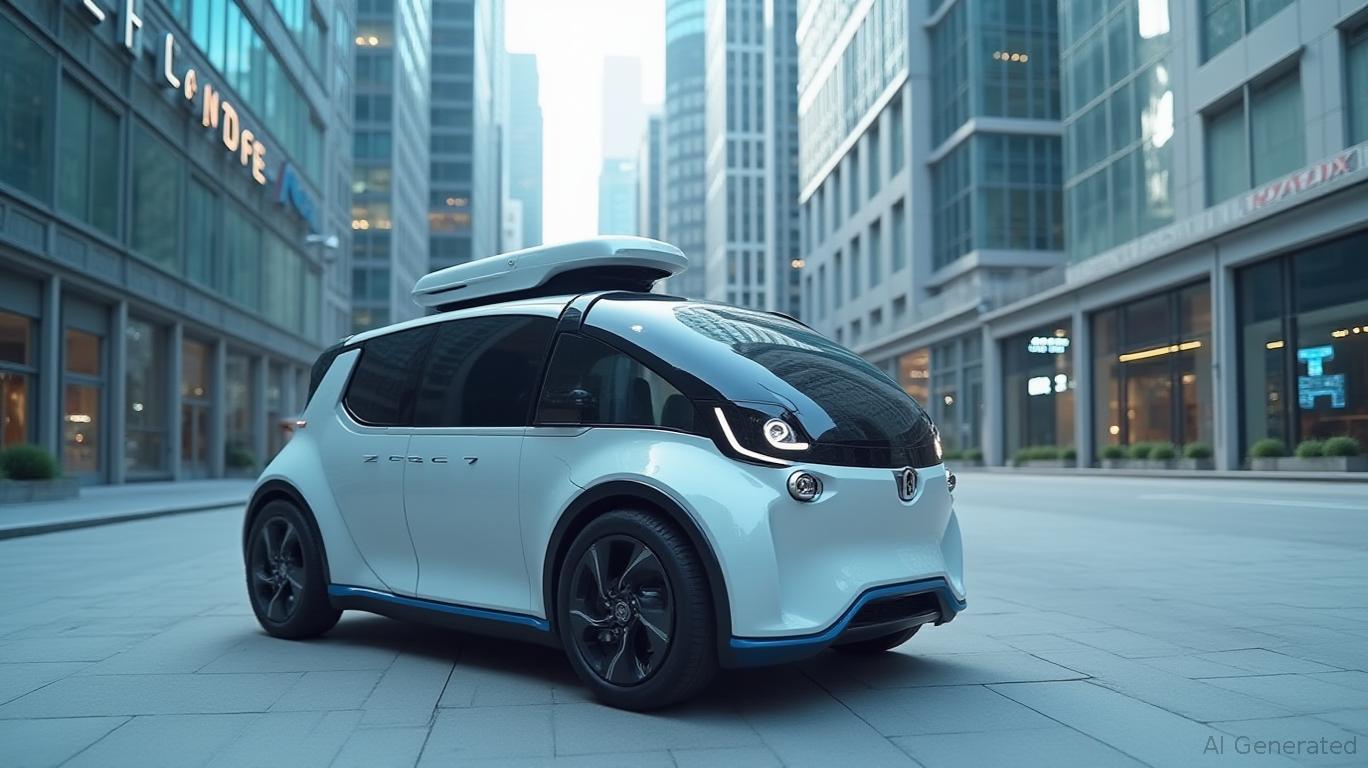Pony.ai's Gen-7 Breakthrough: The Path to Autonomous Dominance
The autonomous vehicle industry is at a pivotal moment, with cost leadership and scalable ecosystems emerging as critical differentiators. Pony.ai, a Chinese autonomous driving pioneer, has made a bold stride forward with its Gen-7 Robotaxi system, which claims a 70% reduction in bill-of-materials (BOM) costs compared to its predecessor. This advancement, paired with automotive-grade mass production readiness and strategic partnerships, positions Pony.ai to capture a commanding position in a market projected to exceed $1.5 trillion by 2030. For investors, this is a rare opportunity to bet on a company that has engineered a structural cost advantage while building the infrastructure to scale globally.
The Cost Leadership Edge
Pony.ai's Gen-7 system achieves its
reduction through a combination of hardware optimization, modular design, and automotive-grade component adoption:- Autonomous Driving Computation (ADC): Costs have dropped by 80%, driven by optimized chip architectures and partnerships with automotive suppliers.
- Solid-State LiDAR: Costs are down 68%, enabled by volume manufacturing and that allows reuse across vehicle models.
- Modular Platform Architecture: This enables seamless adaptation to multiple vehicle types, from Toyota's bZ4X to BAIC's Aion V, slashing development costs and accelerating time-to-market.
The result? A system that costs $7,000–$10,000 per vehicle—a fraction of the $50,000+ BOM for earlier generations. This breakthrough is critical: 80% of autonomous vehicle costs are tied to hardware, and Pony.ai's ability to reduce these costs positions it to achieve unit economics superior to rivals.

Mass Production and Regulatory Momentum
Gen-7 is not just a lab prototype—it is production-ready. Pony.ai has secured partnerships with automakers like
, BAIC, and GAC to leverage their manufacturing expertise, ensuring automotive-grade reliability at scale. By mid-2025, Pony aims to deploy 1,000 Gen-7 Robotaxis, a milestone that will lower per-unit costs further through economies of scale.Regulatory wins amplify this momentum:
- In Shenzhen, Pony became the first company to secure a fully driverless commercial license, enabling operations across 2,000 square kilometers—a zone 20x larger than San Francisco's testing area.
- In Dubai, a partnership with the Roads and Transport Authority (RTA) has paved the way for Middle Eastern deployment.
These approvals are not just symbolic; they are cash-generating licenses. With $14 million in Q1 2025 revenue (up 12% year-over-year) and Robotaxi fare revenue surging 800%, Pony is already monetizing its tech.
Global Ecosystem Play: Partnerships as a Moat
Pony's true advantage lies beyond hardware—it is building an autonomous mobility ecosystem through strategic alliances:
1. Tencent's Weixin Platform: Integration with China's largest super-app gives Pony access to 1.3 billion users, enabling rapid user acquisition and data collection.
2. Uber: A partnership to deploy Gen-7 Robotaxis in the Middle East and Europe by 2026, tapping into Uber's global ride-hailing network.
3. ComfortDelGro (Singapore): A joint pilot program to test autonomous taxis in Southeast Asia, where Pony's modular design can adapt to dense urban environments.
These partnerships act as distribution flywheels, reducing Pony's need to build infrastructure from scratch. In contrast, rivals like Waymo or Cruise face higher costs to replicate such scale.
Financials: A Path to Profitability
While Pony's Q1 2025 net loss widened to $37.4 million (up from $20.8 million in 2024), this reflects strategic investments in Gen-7 production and R&D. Key positives:
- Cash reserves of $738.5 million provide ample runway to scale.
- Gross margin, though down to 16.6%, is improving as BOM savings offset higher ADC sales (which have lower margins).
- Operational leverage: A 1,000-vehicle fleet could reduce per-unit costs to $5,000–$7,000, enabling breakeven by 2026.
Investment Thesis: Buy the Early-Mover Play
Pony.ai is not just another autonomous vehicle player—it is a cost-optimized, ecosystem-driven leader with:
1. Structural BOM advantages that outpace rivals.
2. Regulatory and manufacturing partnerships to scale rapidly in Asia and beyond.
3. Strategic alliances to dominate emerging markets before legacy automakers catch up.
The risks are clear: execution delays in mass production, regulatory hurdles in new markets, and competition from incumbents. However, the $1.5 trillion autonomous mobility market demands early movers with scalable models. Pony's Gen-7 is that model.
Recommendation: Buy Pony.ai for long-term growth exposure. The company's cost leadership and ecosystem play make it a rare “first-mover” bet in a sector where execution is everything. With a valuation of ~$5 billion (vs. Waymo's $30 billion+), the upside potential is asymmetric.
The race to commercialize autonomous vehicles is a marathon, but Pony.ai has just sprinted ahead of the pack. This is a stock to hold for the next decade.
Disclosure: This analysis is for informational purposes only. Consult a financial advisor before making investment decisions.

Comments
No comments yet